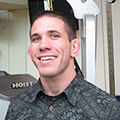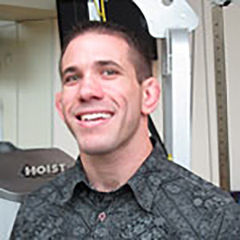We all know that the human body needs energy to function, but where does this energy come from? Ultimately, the energy that keeps us moving comes from the food we eat. However, we cannot use energy directly from food—it must first be converted into adenosine triphosphate, or ATP, the immediate useable form of chemical energy utilized for all cellular function. The body does store a minimal amount of ATP within the muscles, but the majority is synthesized from the foods we eat.
Food is made up of carbohydrates, fats and proteins, and these nutrients are broken down into their simplest forms (glucose, fatty acids and amino acids) during digestion. Once these nutrients are broken down, they are transported through the blood to either be used in a metabolic pathway or stored for later use.
Because we do not store a significant amount of ATP and need a continuous supply, it must be constantly resynthesized. This occurs in several ways using one of three energy systems:
- Phosphagen (immediate source)
- Anaerobic (somewhat slow, uses carbohydrates)
- Aerobic (slow, uses either carbohydrate or fat)
Phosphagen
This system uses creatine phosphate (CP) and has a very rapid rate of ATP production. The creatine phosphate is used to reconstitute ATP after it’s broken down to release its energy. The total amount of CP and ATP stored in muscles is small, so there is limited energy available for muscular contraction. It is, however, instantaneously available and is essential at the onset of activity, as well as during short-term high-intensity activities lasting about 1 to 30 seconds in duration, such as sprinting, weight-lifting or throwing a ball.
Anaerobic Glycolysis
Anaerobic glycolysis does not require oxygen and uses the energy contained in glucose for the formation of ATP. This pathway occurs within the cytoplasm and breaks glucose down into a simpler component called pyruvate. As an intermediate pathway between the phosphagen and aerobic system, anaerobic glycolysis can produce ATP quite rapidly for use during activities requiring large bursts of energy over somewhat longer periods of time (30 seconds to three minutes max, or during endurance activities prior to steady state being achieved).
Aerobic Glycolysis
This pathway requires oxygen to produce ATP, because carbohydrates and fats are only burned in the presence of oxygen. This pathway occurs in the mitochondria of the cell and is used for activities requiring sustained energy production. Aerobic glycolysis has a slow rate of ATP production and is predominantly utilized during longer-duration, lower-intensity activities after the phosphagen and anaerobic systems have fatigued.
It is important to remember that all three of these systems contribute to the energy needs of the body during physical activity. These systems do not work independently of each other, but rather dominate at different times, depending on the duration and the intensity of the activity.
 by
by 









 by
by